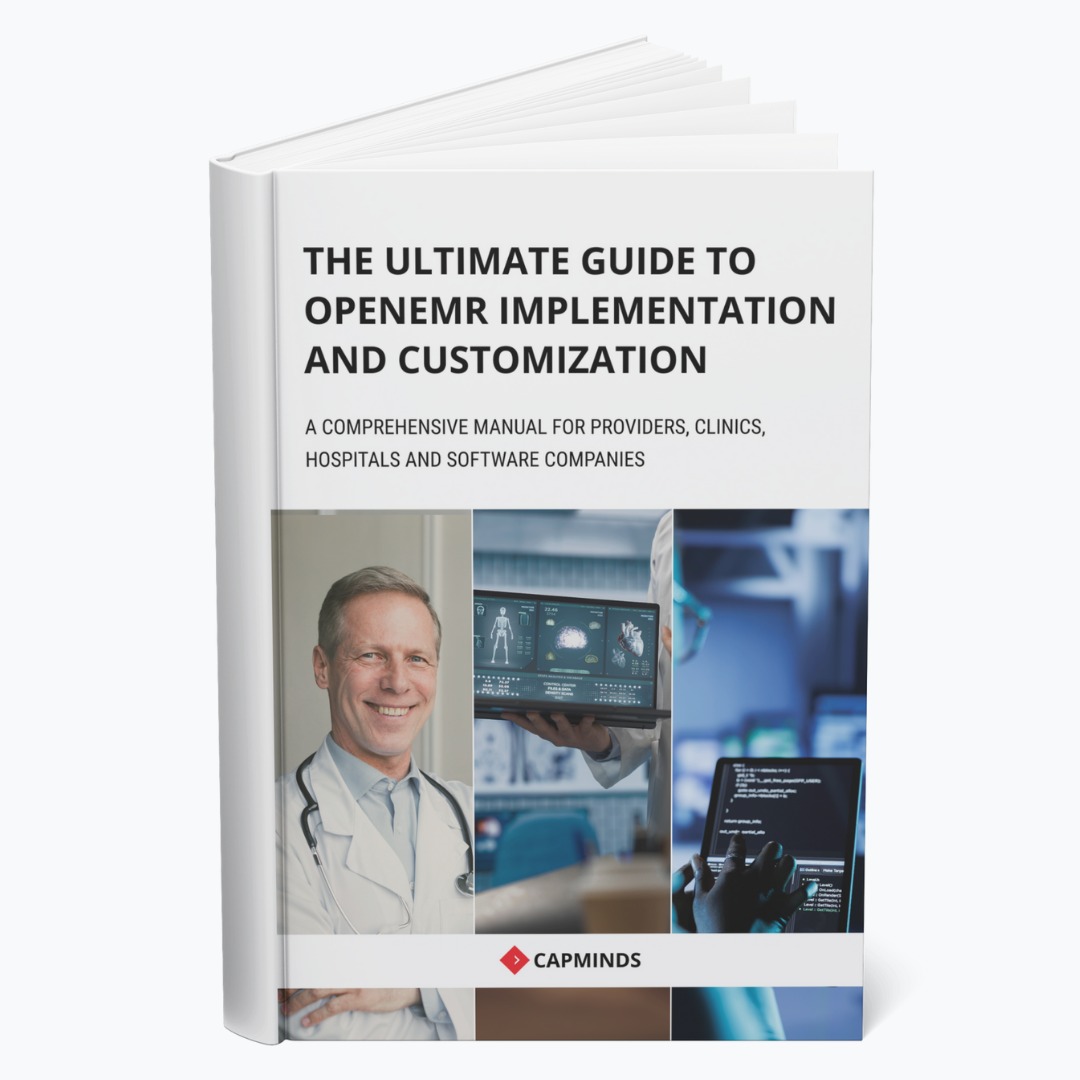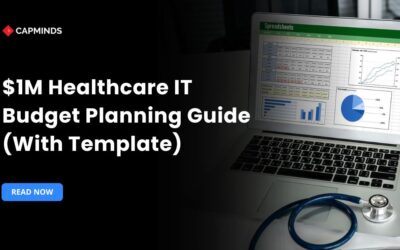Request for Proposal (RFP) Template for Healthcare IT Projects
The healthcare industry generates significantly more revenue from Request for Proposals (RFPs) compared to other sectors, with RFPs bringing in an average of $1.05 billion in deals annually.
There is a growing demand for quality care, new technologies, and a strong emphasis on cost efficiency. Healthcare organizations adapt to current trends, therefore, they frequently rely on RFPs to source vendors, services, and IT solutions.
This blog will explain what an RFP is, its key components, steps in the RFP process, and how to complete a Request for Proposal form.
What is a Request for Proposal?
A request for proposal is an official document utilized by a healthcare organization to gather information from vendors. It is used as an evaluation tool between vendors and medical practices. A well-structured RFP is important for a vendor selection process. It minimizes the chances of selecting an inappropriate system and ensures that the investment is worth it.
- The RFP specifies the practice’s unique needs and expectations, including EHR and IT options.
- Practice can obtain responses from multiple vendors for comparing the cost, time, and their specialties.
- Healthcare organizations evaluate potential vendors based on certain criteria that meet their needs.
Importance of RFP in Healthcare
- Identifying the Right Vendor – RFPs allow healthcare organizations to explicitly explain their specific needs. Vendors can tailor their offerings to the organization’s demands. This aids in identifying well-equipped vendors to satisfy their healthcare’s unique difficulties and objectives.
- Fair Competition – RFPs provide a forum for all qualified vendors to compete for contracts, large and small. This enables healthcare organizations to consider several possibilities and maybe discover unique solutions, resulting in cost savings.
- Security Compliance – Healthcare organizations must comply with regulations such as HIPAA compliance, GDPR, and other security standards to manage patients’ data privacy.
- Evaluation – RFPs structured format facilitates easy comparison of offers and evaluation of providers’ background, experience, capability, security, and customer service. This enables healthcare businesses to make informed decisions and select the best vendor.
Examples of Healthcare RFP
RFP Healthcare covers a wide range of products, services, and initiatives.
- EHR, EMR System Implementation
- Healthcare IT Security Solutions
- Telemedicine Platform Development
- Healthcare Analytics and Data Management Systems
- Medical Equipment Services
- Pharmaceutical Supply Contracts
Benefits of Request for Proposals in Healthcare
- RFPs create a competitive environment, resulting in improved pricing and lower costs for healthcare companies.
- The RFP process allows for a thorough review of possible suppliers, ensuring that the chosen provider is reliable and capable of meeting the organization’s requirements.
- Even if the chosen vendor does not perform as expected, the RFP process generates a list of additional potential providers, allowing firms to find alternatives.
- The RFP process allows firms to objectively evaluate potential providers and avoid risks using data-driven decision-making.
- RFPs enable clear contract communication by detailing all requirements and assessment standards, creating a mutual understanding between the organization and the supplier.
5 Steps in the Healthcare Proposal Process
1. Discovery and Planning
Identify and gather the need for your organization or a specific project that requires an external solution. During this planning, stakeholders are involved in defining project scope and objectives. Set a clear goal of work, project timeline, and budget for the entire project. It determines how medical proposals are evaluated.
2. RPF Preparation & Submission
Create a detailed proposal for your organization that includes project requirements, submission guidelines, and evaluation. Send an RFP to a list of possible vendors.
3. Proposal Evaluation
Gather all vendor proposals that express interest in fulfilling the specific requirements. Review and shortlist proposals based on your criteria. Shortlist the top healthcare vendors for further consideration.
4. Negotiation and Contract
Negotiate terms and conditions with shortlisted vendors. Choose the ideal provider for your project and sign a contract with them.
5. Implementation and Monitoring
Start the work with the selected vendor and implement the progress. Post implementation, continuously monitor the project progress to ensure a streamlined workflow and compliance.
Components in an RFP Document
1. Organization Overview
Tell us about your healthcare organization, the services you seek, the size of your practice, and any particular requirements. Include any criteria, such as implementing telehealth or offering behavioral or mental health support. This is the foundation for matching your practice with a suitable vendor.
2. Project Objective
The initial and essential step in an RFP is to include project data, such as the project name, submission deadline, project cost, contact information, and all other relevant details.
3. Project Specification
The project scope contains a comprehensive description of the project, including resources, deadlines, deliverables, and requirements. List your healthcare needs, including clinical, administrative, and technical requirements for the EHR.
Incorporate features such as seamless interoperability with other systems, telemedicine tools, HIPAA compliance, and strong integration for your practice management system. Make that the requirements include functionality for automating repetitive processes, managing patient data, and increasing overall operational efficiency.
4. Evaluation Criteria
Evaluating the vendors on a criteria basis, which includes their experience, previous clients’ projects, practical knowledge, and a strong team for software development and pricing. These help us identify the potential vendor for your practice.
5. Vendor Response Requirements
You can add a list of questions for vendors, such as their implementation time, system capabilities, support services, and their system workflow. Clarify your doubts and ensure vendor submission includes all the necessary details.
6. Terms of Conditions
Mention legal, compliance, and ensure all vendor responses align with the HIPAA standards and other regulatory standards.
Make Smart IT Investments with CapMinds Healthcare IT Consulting
As you plan your 2025 healthcare IT budget, choosing the right technology investments is key to long-term success. CapMinds helps healthcare organizations focus on what truly matters: smarter systems, seamless workflows, and sustainable growth.
Here’s what you should invest in and how we help:
- Custom EHR Solutions – Streamline documentation and align with your clinical goals.
- Interoperability & Integration – Avoid fragmented systems with secure, scalable data exchange.
- Telehealth Platforms – Support hybrid care models and boost patient engagement affordably.
- Healthcare Analytics – Turn your data into actionable insights that guide better decisions.
- Revenue Cycle Optimization – Improve billing accuracy and increase financial returns.
Why CapMinds?
We help you avoid overspending on unnecessary tech and guide your investments toward scalable, compliance-ready solutions.
With our consulting expertise, automation tools, and healthcare IT insight, you’ll be equipped to make budget-friendly choices that drive clinical and operational excellence.
Let CapMinds be your partner in smart healthcare IT planning for 2025. Contact us today to get started.




